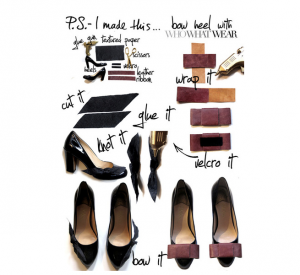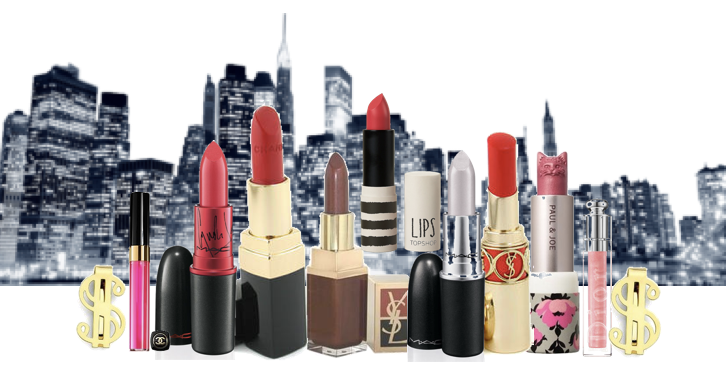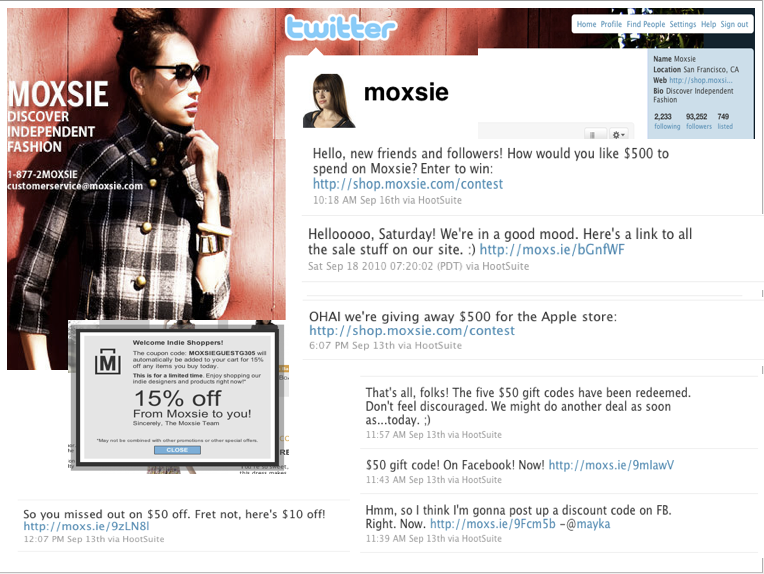Frugal Chic: Business Models that Make the Most of the Economic Apocalypse
Topic: WorkingPoint News | Comments (1)
“Lipstick theory” dictates that in times of economic crisis lipstick sales soar. The theory? Since women don’t have money to spend on designer clothes they indulge in more affordable luxury items which fit with their downsized budgets and more conservative spending habits.
“Frugal chic” embraces the shift to de rigueur thrift. Necessity and successful marketing have made thriftiness cool again and these businesses have found interesting and effective ways to capitalize on this trend. These brands are flourishing because of (rather than in spite of) the changing economy. Now that it’s cool to pinch pennies and people’s spending habits are more conservative, how can your business embrace these strategies to ride out the economic down turn?
Broke Targeting
 Advertising to the financially challenged (a strategy which effectively targets and then engages people without a lot of extra income) is counter intuitive to traditional marketing strategies which logically suggest that you target your marketing to people with a lot of expendable income. But by targeting people who self identify as being “strapped for cash”, and then offering consumer solutions which work for this demographic, small businesses like Brokeass Gourmet (“The premier food and lifestyle blog for folks who want to live the high life on the cheap”) and Brokeass Stuart (“You are young broke and beautiful”) have built successful brands on marketing specifically to the financially challenged.
Advertising to the financially challenged (a strategy which effectively targets and then engages people without a lot of extra income) is counter intuitive to traditional marketing strategies which logically suggest that you target your marketing to people with a lot of expendable income. But by targeting people who self identify as being “strapped for cash”, and then offering consumer solutions which work for this demographic, small businesses like Brokeass Gourmet (“The premier food and lifestyle blog for folks who want to live the high life on the cheap”) and Brokeass Stuart (“You are young broke and beautiful”) have built successful brands on marketing specifically to the financially challenged.
Stuart has parlayed his “Brokeass” brand into a deal channel in San Francisco (the aptly titled “Broke Bucks“), 2 successful books: Brokeass Stuart’s Guide to Living Cheaply in New York and San Francisco, as well as a line of “Young, Broke and Beautiful” branded merchandise.
Flash Sales and Group Buying Discounts
 Flash Sales are every where… Whether it’s high fashion luxury brand names ( Gilt Group or Ideeli), national chains (Groupon and Twitter’s Early Bird), or discounts on every kind of local service from dog grooming to restaurants to spa services (LivingSocial, BloomSpot, and about a million other spinoffs, including deal aggregator Yipit which sources all discounts offered in your area). The proliferation of offerings to get premium, name brand, or luxury goods and services at a deal is overwhelming.
Flash Sales are every where… Whether it’s high fashion luxury brand names ( Gilt Group or Ideeli), national chains (Groupon and Twitter’s Early Bird), or discounts on every kind of local service from dog grooming to restaurants to spa services (LivingSocial, BloomSpot, and about a million other spinoffs, including deal aggregator Yipit which sources all discounts offered in your area). The proliferation of offerings to get premium, name brand, or luxury goods and services at a deal is overwhelming.
Most of these deals feature well known restaurants and brand names, offering discounts on premium items, which were not traditionally subject to mark downs. The various sites provide access to new customers in exchange for steeply discounted access to goods and services. The businesses can then capitalize on the “deal seeking” culture of the downsized economy by gaining access to engaged, targeted lists who have “opted in” to receive these emails. Although many local deals are currently only offering deals in large urban areas like New York, LA, Boston and San Francisco, group buying discounts and flash sales are rapidly expanding to new areas as fast as they can open up new markets!
DIY Designer Goods
 DIY Guru Erica Domesek has created a thriving business from making super chic DIY apparel and home items inspired by high fashion and runway trends. (Her Motto ” I see it. I like it. I make it”). In addition to her incredibly popular blog PS. I made this and her newly released book of the same title, Erica’s work has been featured in publications such as Teen Vogue, Glamour, Vogue Nippon, Domino, GQ, InStyle, and Marie Claire, among others. She has styled and designed campaigns for International brands such as Kate Spade, Tumi, J.Crew, Anthropologie, Roxy, Sigerson Morrison, and True Religion, Helmut Lang, Coca-Cola.
DIY Guru Erica Domesek has created a thriving business from making super chic DIY apparel and home items inspired by high fashion and runway trends. (Her Motto ” I see it. I like it. I make it”). In addition to her incredibly popular blog PS. I made this and her newly released book of the same title, Erica’s work has been featured in publications such as Teen Vogue, Glamour, Vogue Nippon, Domino, GQ, InStyle, and Marie Claire, among others. She has styled and designed campaigns for International brands such as Kate Spade, Tumi, J.Crew, Anthropologie, Roxy, Sigerson Morrison, and True Religion, Helmut Lang, Coca-Cola.
New York Design Shop, which is a DIY heaven supplying ideas and products for the aspiring DIYer, sums up the trend best: 
“In the present economy, many are forced to get creative where they would normally splurge. ”
By creating a foothold for the frugal fashionista who can’t afford pricey designer goods (and so instead decides to create her own) these two businesses used their understanding of the changing marketing dynamic to build a niche for themselves because of rather than inspite of the economic downturn.
Social Media Generosity
According to Mashable, discounts account for 40% of why people “like” a business on Facebook. Social Media and “frugal chic” seem to go hand in hand in building an effective customer acquisition strategy for small businesses operating with limited resources. Moxsie has been praised for developing a highly effective social media strategy based on the “frugal chic” model, combining highly interactive content and discount incentives to build a tremendous, and highly engaged Twitter following. In addition to creating a very interactive experience, tweeting items as they arrive and giving people a first look at new products (sometimes straight from the box!), they also use twitter to frequently offer discount codes and other special offers. Moxsie has also built their brand reputation around offering independent designer fashion at an affordable price point. Their twitter page broadcasts sales as soon as they launch, as well as offering discount codes and prizes… everything from 15% off an order to an ipad.
Moxsie’s Twitter strategy was featured in Twitter Tales check out the video below.The result? With very few employees and a limited budget they now have over 92,000 followers.
Twitter Tales – @moxsie from TwitterHQ on Vimeo.
How are you adapting your business marketing and strategy to reflect the changing economy? In what ways has your business model adapted to reflect the ways in which spending habits have changed?


Pingback: Tweets that mention Frugal Chic: Business Models that Make the Most of the Economic Apocalypse | WorkingPoint -- Topsy.com()